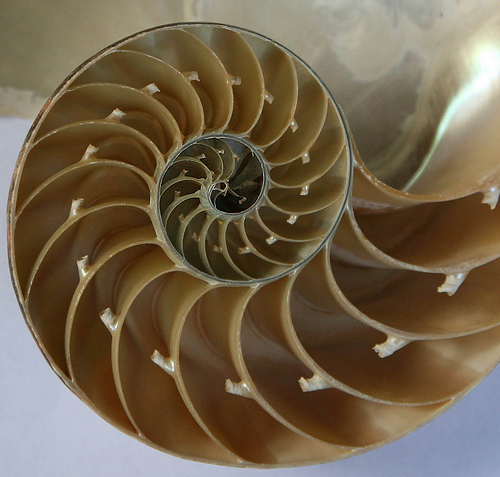Marvel the minds of the ancient world as you discover the wonders of the golden ratio.
- The golden ratio is a mathematical term given to the phenomena of when two lengths, when divided via a formula, is equal to the number phi (φ).
- ‘Golden ratio’ is also known as ‘golden section’, ‘medial section’, ‘golden proportion’, ‘divine section’, ‘extreme and mean ratio’ and ‘golden mean’, and is called ‘sectio aurea’ in Latin.
- The formula of the golden ratio is the total of two lengths divided by the longer length (a+b/a), where it equals the longer length divided by the shorter length (a/b).
- A golden ratio occurs when the formula equation equals the number phi, which is roughly 1.618033, however, this number has an infinite number of decimal places.
- The golden ratio was likely first discovered by mathematicians of Ancient Greece, including Pythagoras and Euclid, and studied by later folk such as the Italian Leonardo Bonacci (Leonardo of Pisa).
Golden Ratio/Fibonacci Spiral evident in a Shell
Image courtesy of Jitz Couperos/Flick
- Many forms of nature feature the golden ratio in some arrangement, from human facial features, to the petals on flowers.
- Many artists, architects and musicians consider the golden ratio when creating their work; and the ratio is said to be evident in the Parthenon temple, and the Last Supper painting, among others.
- The Fibonacci sequence, described by Leonardo Banacci, that defines spirals evident in flowers, galaxy spirals, and hurricanes, uses the golden ratio.
- Rectangles can be created via the golden ratio, known as ‘golden rectangles’, that have sides of a 1:1.618 ratio, and they are widely accepted as being more aesthetically pleasing than rectangles of random sizes.
- The value of the golden ratio is not easily written as a fraction, as it is a continued fraction, and it is therefore usually written as a shortened decimal number, or as the symbol phi (φ).
Bibliography:
Dvorsky G, 15 Uncanny Examples of the Golden Ratio in Nature, 2013, io9, http://io9.com/5985588/15-uncanny-examples-of-the-golden-ratio-in-nature
Golden Ratio, 2014, Maths is Fun, https://www.mathsisfun.com/numbers/golden-ratio.html
Golden Ratio, 2015, Wikipedia, http://en.wikipedia.org/wiki/Golden_ratio








